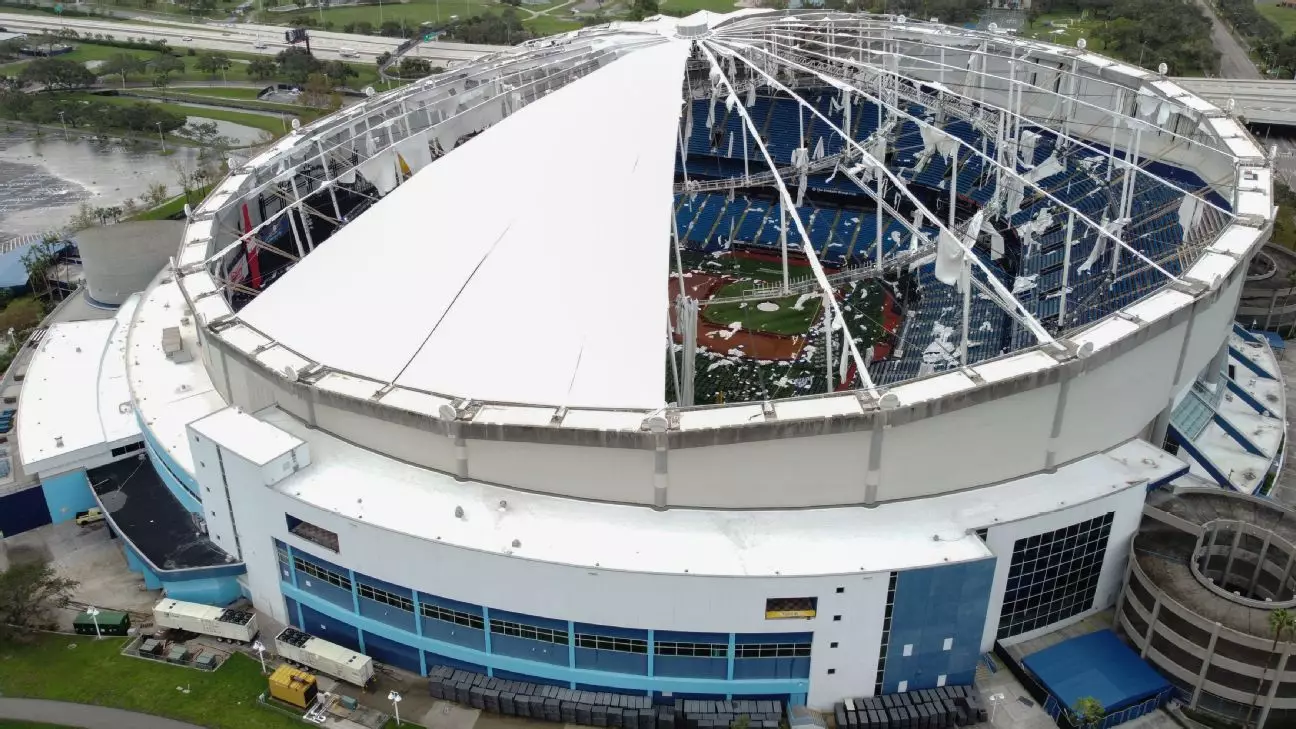The Tampa Bay Rays made headlines recently as they announced the suspension of their ambitious $1.3 billion stadium project in St. Petersburg, Florida. Principal owner Stuart Sternberg’s revelation that the decision stemmed from an array of unexpected challenges, particularly the substantial damage inflicted by Hurricane Milton, marks a critical juncture not just for the franchise but for baseball’s footprint in the Tampa Bay area. The tropical storm’s aftermath rendered Tropicana Field unplayable and pivoted the vision for a new ballpark into a state of uncertainty. This decision encapsulates a broader dilemma faced by both sports franchises and local municipalities in planning for long-term infrastructure amid volatile weather patterns exacerbated by climate change.
Financial Realities and Investment Decisions
While the original proposition to replace Tropicana Field with a modern 30,000-seat venue created excitement, the practicalities surrounding financing have revealed a harsh reality. The Rays were tasked with confirming their capacity to fulfill a minimum $700 million financial obligation by March 31, a requirement contingent on the approval of public bonds. This funding strategy, which had been buoyed by enthusiastic local governmental support, rapidly faltered amid delays. It begs the question: How sustainable are ambitious sports projects when navigating the unpredictable maze of financial protocols and natural disasters? Sternberg’s transparency in citing these obstacles prompts a re-examination of how sports teams align their interests with community needs in an era where economic realities often clash with visionary development.
Community Sentiment and Fan Engagement
Though the Rays’ struggle signifies a setback in their pursuit of a state-of-the-art venue, it raises pertinent discussions about community engagement and fan base loyalty. Averaging only 16,515 fans per game last season underlines a disconnect that could challenge any future proposals. The team’s temporary relocation to the New York Yankees’ spring training complex in Tampa signals an opportunity for the franchise to reassess its approach to fan engagement. How the Rays navigate this transitional phase will be crucial—not only for their immediate brand but for securing future support for any revitalization efforts. Balancing excitement with tangible infrastructure needs is paramount, and this season could provide critical insights into what local fans truly desire from their team.
Looking Ahead: The Future of the Tampa Bay Rays
The Rays find themselves at a crossroads, with their home field operations under review as they anticipate a return to Tropicana Field by the 2026 season. It’s a pivotal moment that demands creativity in bridging community expectations with the harsh realities of the current infrastructure landscape. As local officials embark on restoring Tropicana Field, the franchise must also explore innovative ideas to invigorate attendance and rekindle enthusiasm within the Tampa Bay region. With planning meetings and community seminars likely in the pipeline, fostering a dialogue between the team and its supporters might hold the key to revamping not just the stadium plans but also the very spirit of baseball in the area.


Leave a Reply